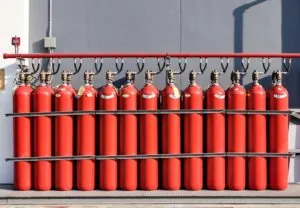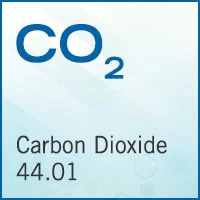Fire Suppression
Carbon dioxide (CO2) is the most common and extremely effective (non-water) fire extinguishing agent. In addition to being economical and leaving no residue, CO2 is effective on a wide range of flammable materials.
Carbon dioxide is a colorless, odorless, electrically non-conductive gas with a density approximately 50% greater than air. When used to suppress a fire, it provides a blanket of heavy gas which reduces the oxygen content of the atmosphere to a point when combustion cannot be sustained.
Unlike sprinkler and foam suppression systems, CO2 fire suppression systems require little to no clean-up, making carbon dioxide a cleaner fire protection solution.
Typical applications using carbon dioxide fire suppression systems include:
- control rooms
- flammable liquids storage areas
- generator rooms
- ovens and dryers
There are a variety of CO2 storage options from low pressure total flood, or low pressure local application systems to high pressure CO2 fire suppression systems.
Large Fire Suppression Applications
High pressure systems using non-refrigeration, high pressure cylinders can be connected together to provide a greater supply of CO2 for large applications. These systems are designed to protect hazards that require varying amounts of CO2.
Large fire suppression applications can use bulk tanks with a transfer pump and motor system allowing you to recharge your fire suppression tanks as needed regardless of the time or day and refill during normal business hours.
Medium Fire Suppression Applications
Microbulk tanks used in medium fire suppression applications bridge the gap between smaller bulk tanks and cylinder applications. These CO2 tanks can be upgraded as your fire suppression needs grow.
Small Fire Suppression Applications
For smaller fire suppression requirements, CO2 cylinders can be used for low pressure total flood or local application systems.
CryoCarb™ will help evaluate your CO2 usage and help to find the best solution to keep your business protected. Call (888) 254-5931.


